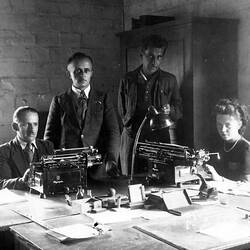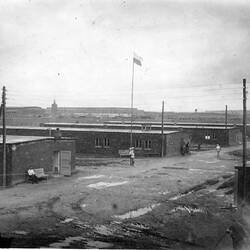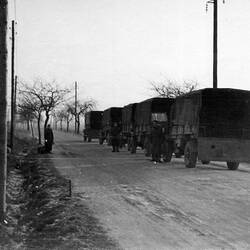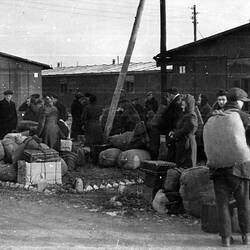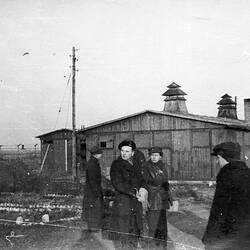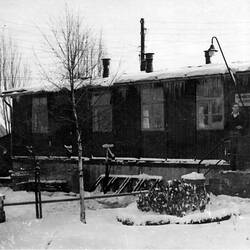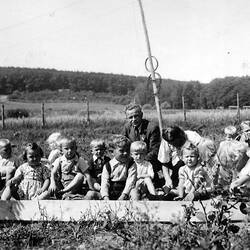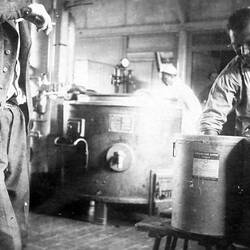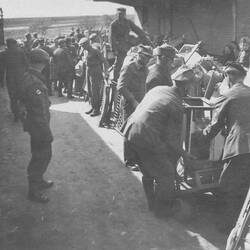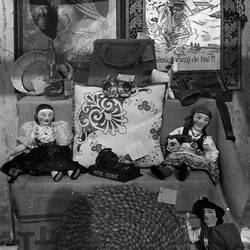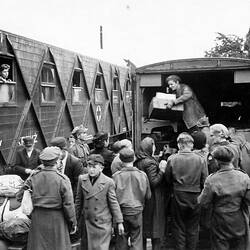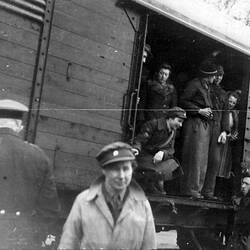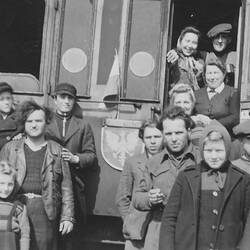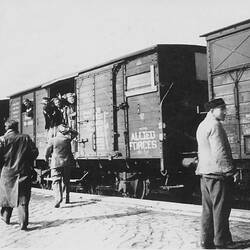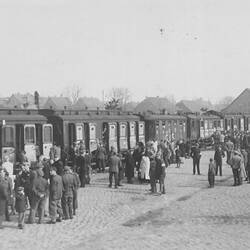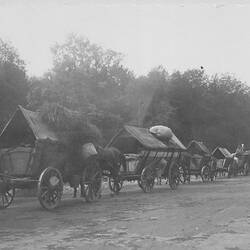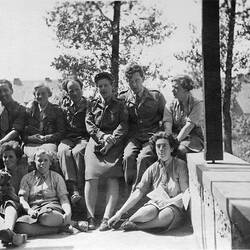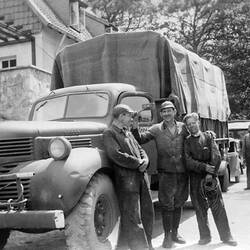Summary
The Guide International Service Team 107 was part of the combined operation of the 112 Military Government, UNRRA [United Nations Relief and Rehabilitation Administration] and voluntary relief teams looking after the care and repatriation of persons displaced throughout Europe as a result of World War II. The GIS Team 107 was working in camps in the Salzgitter area of Germany and invloved in many aspects of the management, movement, and care of primarily Polish Displaced Persons from 1945-1949.
The United Nations Relief and Rehabilitation Administration (UNRRA) was created in Washington DC at a 44-nation conference in 1943. Its mission was to provide economic assistance to European nations after World War II and to repatriate and assist the refugees who would come under Allied control. UNRRA assisted in the repatriation of millions of refugees in 1945 and managed hundreds of displaced persons camps in Germany, Italy, and Austria during that year. It provided health and welfare assistance to the displaced persons (DPs), as well as vocational training and entertainment. It administered the work of 23 separate international voluntary welfare agencies. In late 1945, as the displaced persons camps were given greater autonomy, the voluntary agencies increasingly operated independently. UNRRA continued to serve as a major employer of displaced persons.
The massive and protracted relief efforts caused the agency to run out of funds and in 1947 its tasks were taken over by a successor organisation, the International Refugee Organization (IRO). The new agency inherited the care of 643,000 displaced persons in 1948.
The Guide International Service (GIS) Team was part of the combined operation of the 112 Military Government, UNRRA and voluntary relief teams looking after the care and repatriation of displaced persons. The GIS recruited and trained volunteers in Australia as well as the UK, with a GIS Committee based in Melbourne. Many women had been involved in voluntary services during the War and memberships also included some men.
GIS team 107 moved west to east working in camps in the eastern Salzgitter area of Germany from 1945, by 1948-1949 back west to Bielefeld, and teams were still involved in relief work in 1951. The team was based Gebhardshagen in the Salzgitter region in northern Germany, billeted in a pair of semi-detached houses. The team leader was Stella Cunliffe and Alan Tydelsey was one of the team's volunteer workers numbering around 14 people. They were responsible for nine DP camps, a children's camp and hospitals. The camps were referred to by number and location: 3 Engerode, 4 Gebhardshagen, 5 Haverlahwiese, 14 Gustedt, 35 Heerte, A1 Heerte, D Heerte, F33 Calbecht, the Kinderheim at Engerode and hospitals at Barum and Drutte all in the area south west of Brunswick near Salzgitter.
Most of the displaced persons in these camps were Polish, forced by the third Reich to toil in Goering's steel works at Watenstedt. During this early period, 1945-1946, there were as yet no re-settlement schemes, only repatriation opportunities back to, for example Poland and the Baltic states (not always the desired option for people fearful of Soviet rule). Each camp had its own Polish administration with a commandant in charge with whom the GIS staff liaised. As Polish and German were the languages spoken communication between the team members, Polish staff and residents could be challenging and the GIS staff learned what basic German they could. Transport consisted of three trucks, a Bedford ambulance and three commandeered civilian cars. These were used for collecting and delivering supplies to the camps (such as mattresses, clothing, cigarettes, beer, straw, matches, soap and so on). Food for the camps was supplied by the Displaced Persons Bureau and the GIS staff were responsible for keeping track of camp population numbers and movements of people. Staff supplied their own wood for heating fuel.
Alan Tyldesley was in charge of A1 Heerte, one of the larger camps, working with Polish Commandant Mikolaj Lawrow who administered the daily camp operations. It appears the volunteer teams had to hit the ground running, learn on the job and undertake a variety of tasks and duties including transportation of people and supplies, registering arriving and departing DPs, logging for fuel, office administration, food distribution, cooking, repairing decrepit buildings for habitation, always working with a post-war scarcity of supplies. The GIS staff organised recreational activities for the DPs as well as an occasional leave break in other parts of Germany and beyond. The movement of DPs was particularly complex. It required the identity cards for each Displaced Person, listing basic details - name, nationality date and place of birth - and also recording clothing issued, vaccinations given, and medical assessment. GIS staff were also responsible for overseeing that DPs were organised into particular trucks, their luggage checked, and boarding on trains.
Reference
Phyllis Stewart Brown 'All Things Uncertain: the Story of the G.I.S.' [Girl Guides Association, 1966]
More Information
-
Keywords
-
Authors
-
Article types

